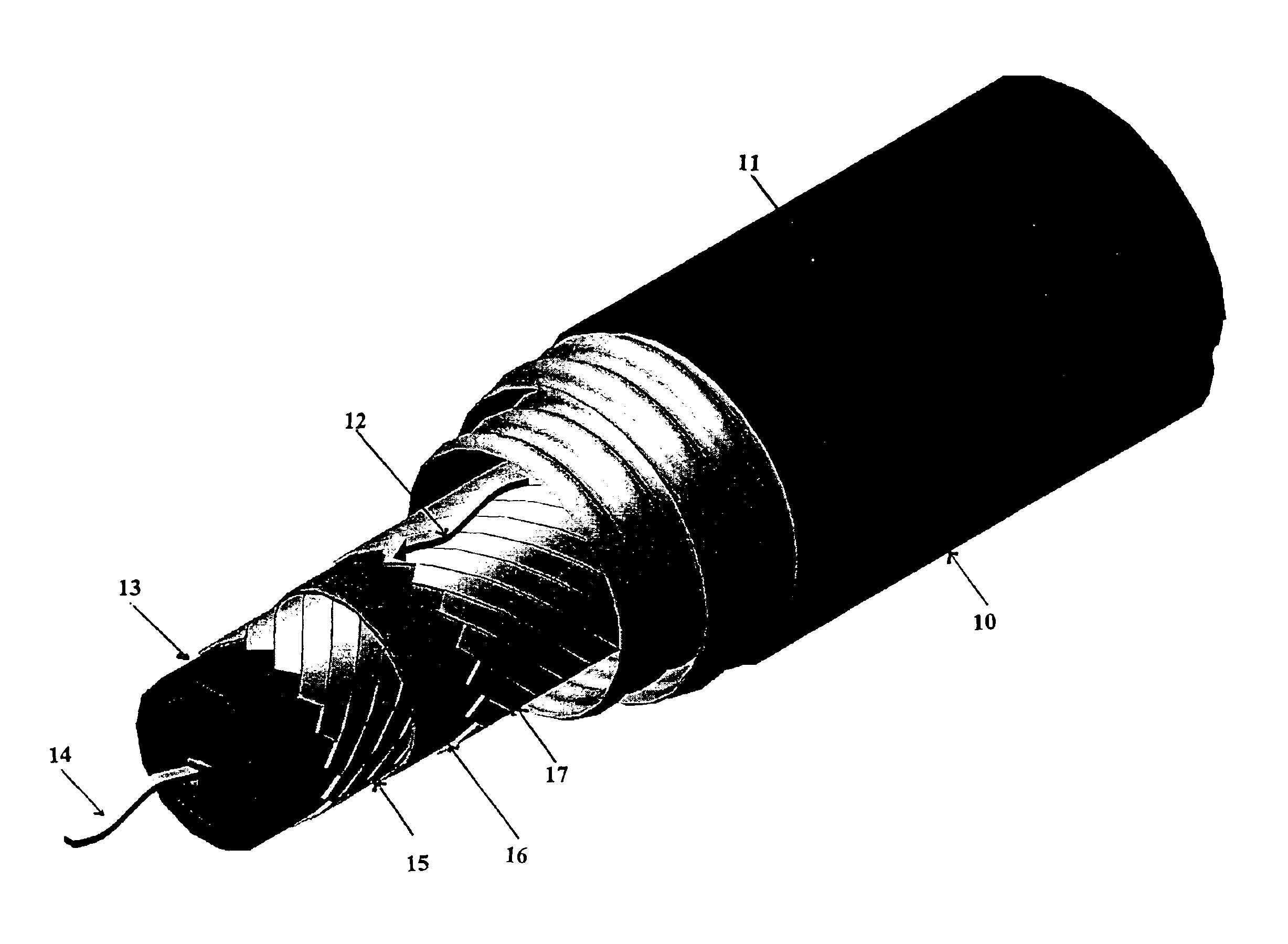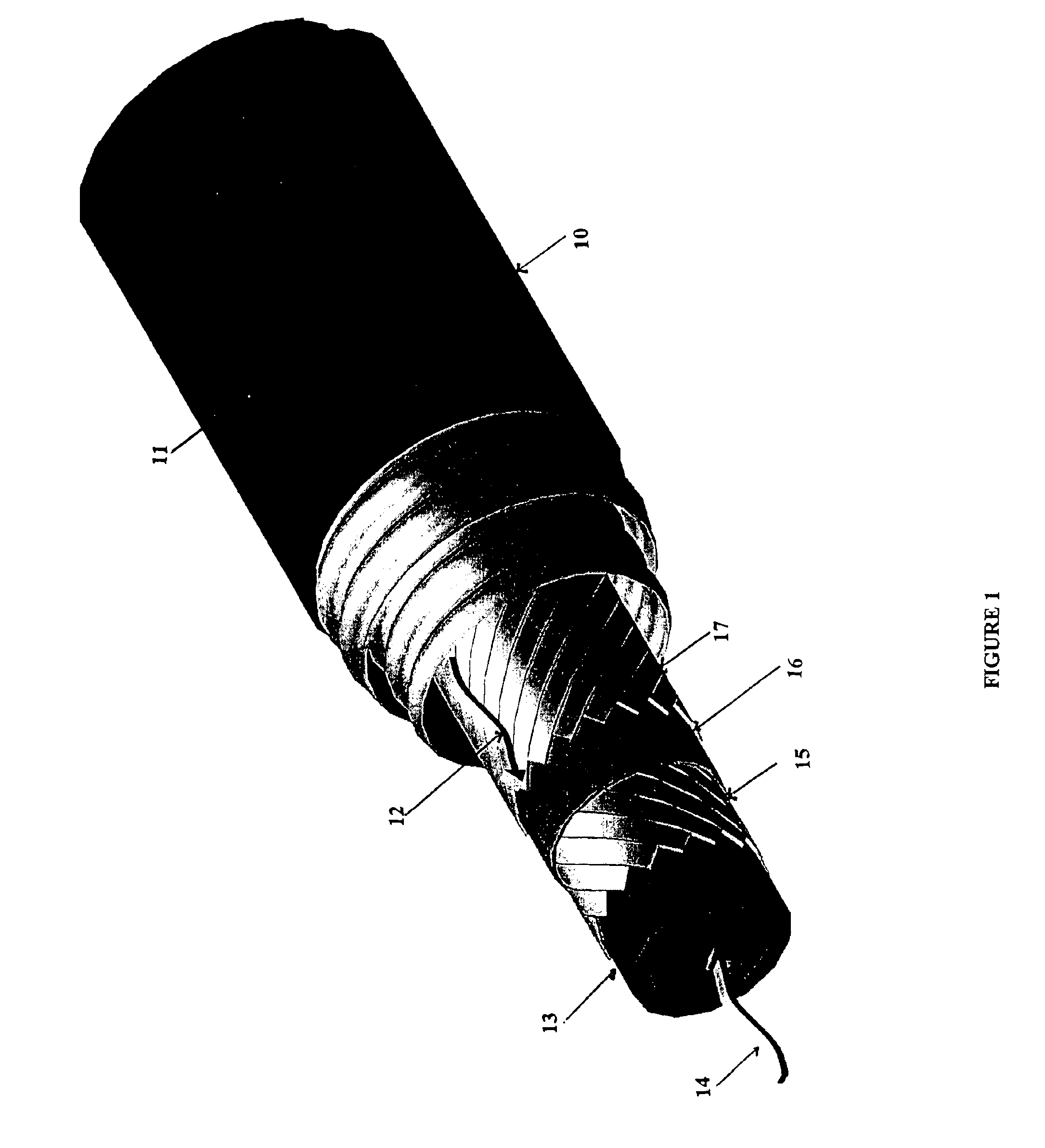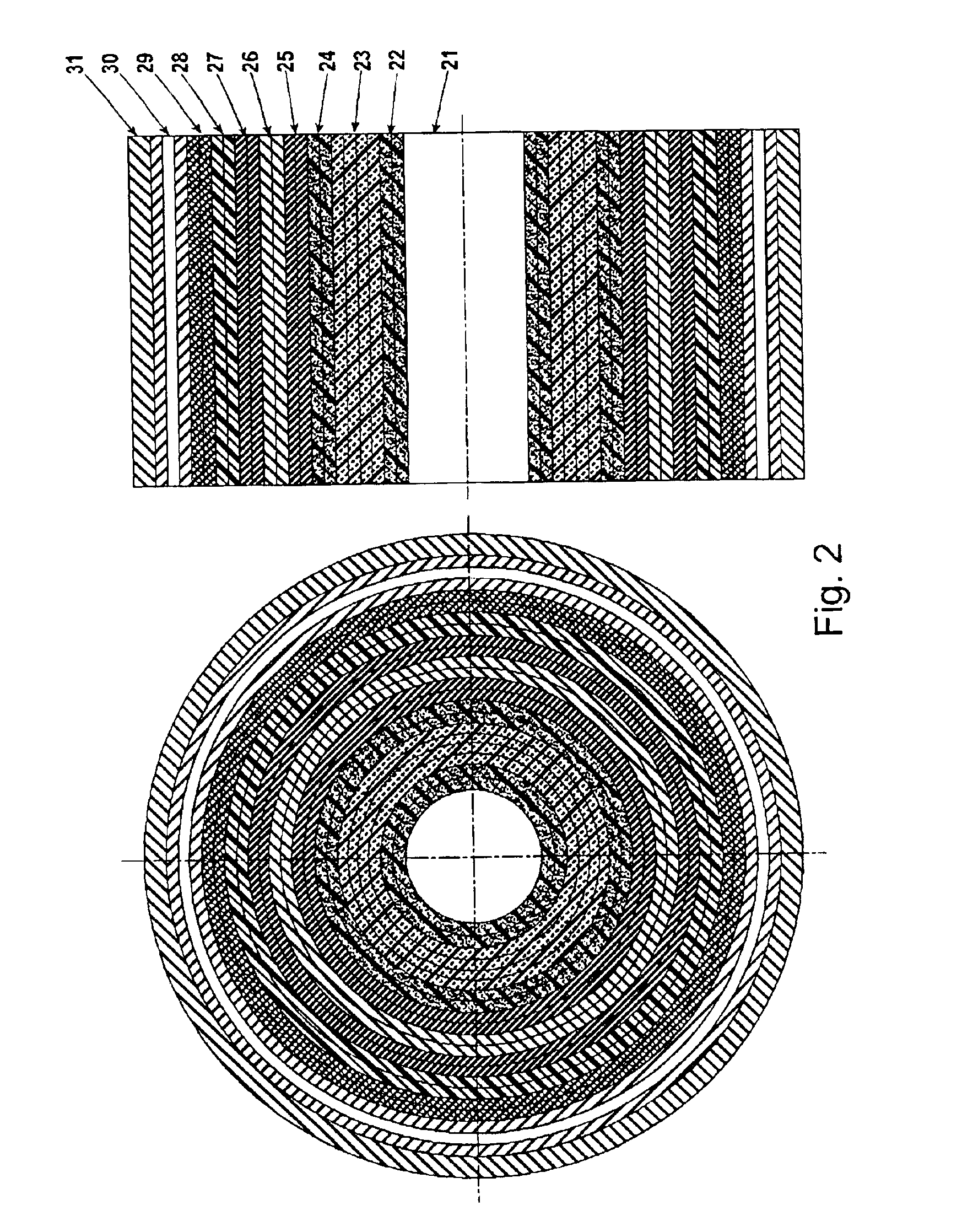Superconducting cable having a flexible former
a superconducting cable and flexible technology, applied in the direction of superconducting magnets/coils, superconductor devices, magnetic bodies, etc., can solve the problems of energy loss of superconductor employed under alternating current, material not previously available as wires, cables, films, etc., to achieve excellent superconductivity, high critical current density, and high critical current density
- Summary
- Abstract
- Description
- Claims
- Application Information
AI Technical Summary
Benefits of technology
Problems solved by technology
Method used
Image
Examples
Embodiment Construction
The present invention relates to a high temperature superconductor cable which may be used in the shielded or unshielded form of construction. There are many applications where both shielded and unshielded cables serve useful purposes.
A modification of this embodiment is to insulate the cable with dielectrics over the high temperature superconductor tapes and then provide another high temperature superconductor layer over the dielectric. The entire cable is then either introduced into a cryostat of the type described above or a cryostat is constructed over the cable. This coaxial construction forces the magnetic field to stay between the inner and the outer layers of high temperature superconductor tapes. There is substantially no magnetic field outside the high temperature superconductor tapes and therefore there is no eddy current in the outer metallic enclosures. With this construction very large amounts of current can be carried depending upon the number of tapes present in the ...
PUM
| Property | Measurement | Unit |
|---|---|---|
| temperature | aaaaa | aaaaa |
| temperature | aaaaa | aaaaa |
| bending strain | aaaaa | aaaaa |
Abstract
Description
Claims
Application Information
 Login to View More
Login to View More - R&D
- Intellectual Property
- Life Sciences
- Materials
- Tech Scout
- Unparalleled Data Quality
- Higher Quality Content
- 60% Fewer Hallucinations
Browse by: Latest US Patents, China's latest patents, Technical Efficacy Thesaurus, Application Domain, Technology Topic, Popular Technical Reports.
© 2025 PatSnap. All rights reserved.Legal|Privacy policy|Modern Slavery Act Transparency Statement|Sitemap|About US| Contact US: help@patsnap.com



